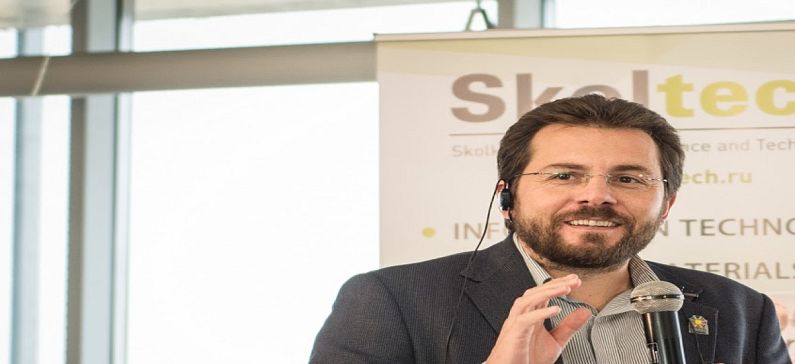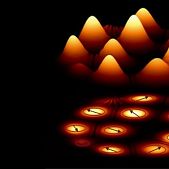
A Greek scientist suggests a new kind of supercomputer
A team of researchers from the UK and Russia, among them 2 Greek researchers, have successfully demonstrated that a type of ‘magic dust’ which combines light and matter can be used to solve complex problems and could eventually surpass the capabilities of even the most powerful supercomputers.
The researchers, from Cambridge, Southampton and Cardiff Universities in the UK and the Skolkovo Institute of Science and Technology in Russia, have used quantum particles known as polaritons – which are half light and half matter – to act as a type of ‘beacon’ showing the way to the simplest solution to complex problems. This entirely new design could form the basis of a new type of computer that can solve problems that are currently unsolvable, in diverse fields such as biology, finance or space travel. The results are reported in the journal Nature Materials.
When calculating a mathematical solution to a complex problem with real-world applications, it is essential to ensure the minimal number of steps possible. The most direct path to an answer keeps the risk for confusion or mistakes low, but when tackling the most intricate problems of our known universe, this becomes a seemingly impossible task. “This is exactly the problem to tackle when the objective function to minimise represents a real-life problem with many unknowns, parameters, and constraints,” said the paper’s first author, Professor Natalia Berloff of Cambridge’s Department of Applied Mathematics and Theoretical Physics and the Skolkovo Institute of Science and Technology.
Berloff, along with her team, designed this use of “magic dust” from a fairly creative angle. As the will-o’-the-wisp lights a path for travelers in Scottish folklore, polaritons act as easily detectable markers, guiding scientists towards a solution. Select atoms like gallium, arsenic, indium, and aluminum are stacked and a laser is directed at them. The electrons in this light-matter mashup absorb the light and emit light in different colors. 10,000 times lighter than electrons, polaritons could reach densities that would make it a Bose-Einstein condensate, a new state of matter in which the quantum phases of these polaritons would both sync up and create a macroscopic quantum object detectable with photoluminescence. These scientists are, quite literally, creating beacons of light.
Co-author Professor Pavlos Lagoudakis, Head of the Hybrid Photonics Lab at the University of Southampton and the Skolkovo Institute of Science and Technology (where the experiments were performed) expounded, “We are just at the beginning of exploring the potential of polariton graphs for solving complex problems…We are currently scaling up our device to hundreds of nodes, while testing its fundamental computational power. The ultimate goal is a microchip quantum simulator operating at ambient conditions.”
The postdoctoral researcher Alexis Askitopoulos, a graduate of the University of Crete and a partner of Lagoudakis, also participated in the study.
It isn’t just the depths of astrophysics that contain unsolvable problems. Biology, finance, space travel, and others have deep wells of unanswered questions. Questions that a supercomputer using magic dust to light the way to a simple solution might be able to answer.
Pavlos has pioneered in the field of polaritonics with the first demonstration of polariton lasing at room temperature and he is recognized in the international scientific community for the realization of the theoretical proposals of Dexter (1979) and Agranovich (1998) on hybrid organic-inorganic photonic devices for light harvesting and light emission respectively. For his contribution in the field of polaritonics and hybrid photonics Pavlos received the Quantum Electronics Young Scientist Prize from the International Union of Pure and Applied Physics (Sydney, 2011). Pavlos has leveraged over £20M of funding from the Engineering and Physical Sciences Research Council (EPSRC), the Royal Society, the British Council, UKIRIE, the EU and industry.









